Top Tyre Brands in India | 2024 Guide

Table of Contents
When it comes to choosing the best car tyres in India, the decision can be as crucial as selecting the car itself. With a plethora of options available, it’s essential to know which brands stand out. I’ve delved deep into the market to bring you a curated list of top tyre brands that promise quality and performance.
From the durability of CEAT’s SecuraDrive to the cost-effectiveness of MRF’s ZLX, each brand offers a unique blend of features to cater to diverse driving needs. Whether you’re navigating city streets or exploring rugged terrains, finding the right tyre is key to a smooth and safe journey. Let’s explore what makes brands like Bridgestone and Goodyear resonate with Indian consumers and how they’ve earned their stripes in the tyre industry.
Apollo Tyres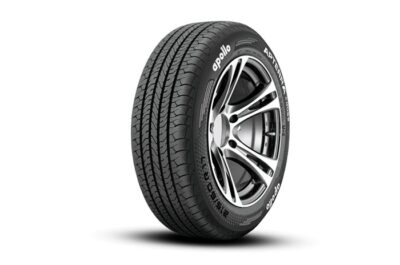
Established in 1972 in Haryana, Apollo Tyres has etched its name as a formidable contender in the Indian tyre market. I’ve found that with a market share of about 18%, it stands as the second most popular tyre brand in the country. This is no small feat, especially considering the competitive landscape of tyre manufacturing in India.
Beyond its impressive foothold in India, Apollo Tyres commands a global presence, ranking as the 15th largest tyre maker in the world by production volume. The company’s influence stretches across over 100 countries, bolstered by seven manufacturing facilities—five in India and two in Europe—and two state-of-the-art global research and development centres.
Here’s an interesting fact: the majority of Apollo’s revenue is generated within India, with the figures distributed as follows:
| Region | Percentage of Total Revenue |
|---|---|
| India | 69% |
| Europe | 26% |
| Other | 5% |
Their expansive product line caters to a diverse range of vehicles, including:
- Bikes and scooters
- Four-wheelers
- Trucks and buses
- Agricultural, industrial, and earth-moving machinery
When it comes to price points, Apollo tyres are quite accessible. For four-wheelers, prices start from Rs 2800 and can go up to Rs 9000, whereas for two-wheelers, one might expect to shell out anywhere between Rs 2200 and Rs 4500.
Apollo isn’t just about extensive outreach and competitive pricing. It’s their relentless pursuit of innovation through advanced research and development that has led to the creation of high-quality, performance-oriented tyres. These products don’t just meet but often exceed expectations in terms of durability and safety.
Standing shoulder to shoulder with MRF Tyres, Apollo has become a shining example of Indian excellence in the global arena. While MRF Tyres holds the 13th rank with a brand value growth of 3% to 0.3 billion, Apollo follows closely at No. 15, boasting a brand value of 0.6 billion. This growing stature is a testament to Apollo Tyres’ commitment to meeting the driving needs of consumers not just in India but around the world.
Ceat Tyres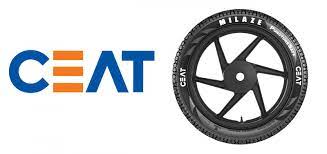
In my extensive experience, I’ve come to recognize that CEAT Tyres stand out as a significant player in the Indian market. Established in 1958, they have become a staple on the roads, known for their resilience and adaptability to India’s diverse driving conditions. One can’t deny their long-standing presence which spans over six decades. During this time, they’ve built a reputation for focusing intensely on research and development, continually driving innovations that cater to a broad spectrum of vehicles.
The brand’s commitment to excellence is further showcased in their proprietary Gripp Technology. This innovation ensures that whether I’m maneuvering my vehicle on a rainy day or cruising on a sun-baked highway, the tyres provide that much-needed superior grip and handling. This technology is particularly crucial for Indian roads, where weather conditions can change abruptly.
Apart from performance, CEAT’s dedication to sustainability is commendable. They’ve put in place numerous initiatives aimed at slashing their carbon footprint, aligning with the global move towards more eco-friendly practices. As a responsible consumer, it’s heartening to see a brand taking significant steps towards protecting the environment while still maintaining high standards of quality and innovation.
CEAT Tyre Pricing
While their commitment to quality is clear, CEAT doesn’t shy away from being accessible to the masses. The pricing of CEAT tyres continues to be competitive, with options available for varying budgets. Here’s a snapshot of the starting price range for different vehicles:
| Vehicle Type | Price Range (INR) |
|---|---|
| 4-Wheelers | 3,000 – 10,000 |
| 2-Wheelers | 745 – 5,400 |
These prices, while attractive, should be considered alongside the longevity and sturdiness of the tyres. Reports suggest that while CEAT Tyres may offer a balanced grip, their Tyre Life and durability fall short, particularly when faced with India’s challenging road conditions. Instances of manufacturing defects, such as air bubbles and a tendency for the tyre to bend, can play into the overall safety and performance, which should never be overlooked when selecting tyres.
MRF Tyres
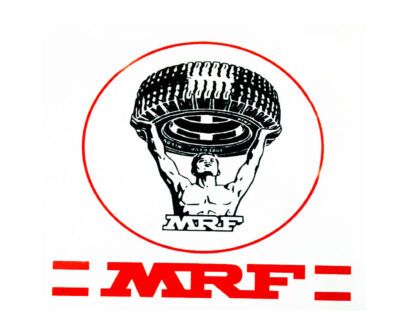
When driving through India’s bustling streets and rugged countryside, I need tyres that can confidently keep pace with varying terrains and weather. That’s where MRF Tyres come in. With a history dating back to 1946, MRF reigns as a dominant force in the Indian tyre industry. Their mastery extends beyond just cars to motorbikes, mopeds, and scooters, with most two-wheeled vehicles in India equipped with MRF Tyres straight from the factory.
MRF’s extensive catalogue doesn’t stop at automobiles. They’ve expanded their expertise into the production of cricket equipment, paints, and conveyor belts. But it’s their role in motorsport that truly underscores their depth of knowledge in tyre technology. MRF is unparalleled in India for developing specialised tyres, including those for formula racing, rallying, and motocross – not to mention being the only Indian company to produce tyres for aircraft.
What stands out about MRF is their commitment to performance and durability. Their tyres are engineered to tackle tough driving conditions, a necessity on many Indian roads. The brand is often the first choice for many locals due to this resilience, offering an acceptable balance between Durability and Grip. While MRF Tyres may not align with the luxury of premium brands, their pragmatic approach to design and cost makes them a go-to for practical car owners.
However, as we look forward with a growing focus on Sustainability, expectations from tyre manufacturers are evolving. With MRF’s impressive brand value growth of 3% to $0.3 billion and their significant rank jump in industry rankings, it’s clear they’re a force to be reckoned with. The tyre industry is shifting towards materials that promise lower rolling resistance and a sustainable lifecycle, presenting an opportunity for MRF to further cement their presence in the global market.
Still, it’s crucial to note some downsides. MRF Tyres come with no unconditional warranty, potentially leaving customers to contend with manufacturing defects like air bubbles or tyre bends on their own. While they have made a name for themselves in segments like two-wheelers and trucks/buses, car owners must weigh the pros and cons. Their tyres may withstand the test of time and terrain, but drivers seeking premium comfort may find MRF falls just short of their expectations.
JK Tyres
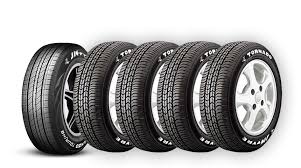
As I delve deeper into India’s best tyre brands, I must spotlight JK Tyre. Established in 1974, this homegrown conglomerate has become synonymous with premium quality and innovation in the Indian market. With advanced R&D facilities, JK Tyre consistently pushes the envelope in tyre technology, ensuring that every product can tackle the diverse Indian terrains.
From bustling city streets to rugged rural paths, I’ve found that JK Tyres are built to last. The brand offers a broad selection of tyres for both cars and bikes, positioning them as a favourite among enthusiasts and everyday drivers alike. Their commitment to high-quality manufacturing processes has earned them top rankings in customer satisfaction surveys.
Turning to sustainability, JK Tyre has joined the movement towards greener production methods. They implement eco-friendly practices, which is commendable given the growing environmental concerns of today.
| JK Tyre Prices | 4-Wheelers (INR) | 2-Wheelers (INR) |
|---|---|---|
| Starting Range | 4,500 – 10,000 | 800 – 2,500 |
Their tyres offer a solid grip and dependable stability, making them a safe option in variable weather conditions. While they may not boast the same comfort levels as some premium competitors, the balance between cost and performance is quite striking.
In terms of longevity and financial sense, JK Tyres make a persuasive case. The brand ensures that even budget-conscious owners don’t have to compromise on quality. Moreover, excellent warranty service accompanies their tyres, solidifying their status as a stellar choice for those who demand both durability and value.
On a personal note, I’ve observed that while driving on Indian roads—known for their potholes and unpredictable surfaces—JK Tyres stand up to the challenge remarkably well. The tyres’ construction anticipates and withstands the wear and tear that such conditions inevitably cause, proving that JK Tyres isn’t just about the initial purchase price, but also about long-term savings and assured road performance.
Bridgestone Tyres
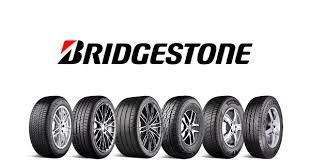
When I’m on the hunt for quality tyres in India, I can’t overlook Bridgestone. Stepping into the Indian market in 1996, this brand has etched its presence with high-quality tyres that cater not just to passenger cars and bikes, but also SUVs and a wide range of commercial vehicles. What strikes me about Bridgestone is its balance of affordability and premium performance.
Bridgestone’s commitment to innovation shines through their R&D efforts. They’re working on a smart tyre solution that’s quite futuristic if you ask me. Imagine having a smart strain sensor that allows you to remotely get data on air pressure, wear and tear, and load in real-time. That’s the kind of technology that pushes a brand to the forefront.
Their manufacturing facilities in India aren’t just mere production units; they’re hubs of advancement where cutting-edge technology meets sustainability. With over 90 years of global industry experience, Bridgestone’s footprint in the tyre sector is remarkable. Their entrée into the Indian landscape has been nothing short of a success story, evident in their widespread network of dealers.
Driving in India can be unpredictable. Whether it’s bustling city roads or rugged rural tracks, Bridgestone tyres are designed to handle it all. I’ve found that their tyres offer a smooth ride and the durability we all crave. The trust they’ve built globally doesn’t falter here in India, where they’ve easily become a go-to choice for drivers.
Affordability doesn’t take a backseat with Bridgestone. Their pricing captures a wide market segment, ensuring there’s a tyre for every budget. For four-wheelers, you can expect prices ranging from ₹3,700 to ₹10,000. Two-wheeler tyres start at an even more economical spot, with prices between ₹850 to ₹5,000.
- Bridgestone Tyre Prices for 4-Wheelers: ₹3,700 – ₹10,000
- Bridgestone Tyre Prices for 2-Wheelers: ₹850 – ₹5,000
Michelin Tyres

As I explore the wide array of tyre brands available in India, I can’t ignore the prominence of Michelin Tyres. Established in 1889, Michelin has become a paramount name in the tyre manufacturing industry, known for their innovative approach and impressive global reach. Although Michelin’s presence in the Indian market is slightly limited due to import restrictions, their historical contribution and the technology they’ve brought has significantly influenced tyre standards.
With a market share of 3% in India, Michelin has tailored their product range to cater to an array of vehicles including bikes, scooters, passenger cars, off-road vehicles, and even truck and bus segments. Their tyres stand out for superior ride comfort, with features that ensure low tyre noise and exceptional braking abilities – qualities that are highly valued by premium vehicle owners.
- Superior High-Speed Stability: Michelin tyres utilise soft compound rubber, enhancing high-speed stability – a critical factor for those who prioritise performance driving.
- Ride Comfort and Low Noise: The brand’s focus on technology results in tyres that promise excellent ride comfort alongside noise reduction, ensuring a serene driving experience.
However, it’s not all smooth rolling; Michelin tyres tend to be less durable on rough terrains filled with potholes and uneven roads. They’re crafted for high-quality city roads and highways, making them a less ideal choice for rural or corroded paths. If your driving conditions are mainly well-maintained roads, Michelin could serve well to your needs.
For those interested, Michelin tyres can still be found through select dealers across the country, albeit with a focus on super luxury premium tyres. Despite the import restrictions in place since June 2020, the brand has left a legacy of quality and performance. Their largest manufacturing unit based in Chennai demonstrates Michelin’s significant investment in India, showcasing their commitment to serving Indian consumers.
Indeed, while Michelin tyres may now be a less common sight on Indian roads, their reputation for innovation, originating from the creation of the first pneumatic bicycle tyre, lives on. Their foresight in tyre technology continues to influence the choices of premium car owners and those with a leaning towards performance-oriented vehicles.
Factors to consider when choosing a tyre brand
Quality and Performance
When on the market for new tyres, I prioritize quality and performance. A high-quality tyre doesn’t just refer to its brand name; instead, it’s about how well the tyre suits my car’s needs and the conditions where it’ll be driven. The tread pattern is vital for traction, ensuring safety and optimal performance during braking, accelerating, and wet conditions. Tyres from renowned brands like Michelin and Bridgestone are crafted to provide excellent handling and stability at high speeds. I always check for tyres that offer superior braking capabilities and a balance between dry and wet performance.
Durability and Longevity
The ability of tyres to withstand the demanding Indian roads is paramount. Durability stems from a tyre’s construction and its resistance to road hazards like potholes. Robustness guarantees that the tyre can take a beating without compromising safety. Longevity, though, relates to how long the tyres last before needing a replacement. Elite performance tyres, while offering enhanced grip and handling, tend to have a shorter lifespan compared to regular tyres. Nevertheless, they’re a worthy investment for my performance-oriented driving style, provided they’re used within their intended road conditions.
Price Range
The price of tyres often reflects their quality, but this isn’t a hard and fast rule. It’s possible to find affordable options that don’t compromise on my expectations for safety and performance. Budget tyres can be a sensible choice for everyday commuting, but for my car that’s used in more demanding situations, it makes sense to invest in higher-priced, premium tyres that offer advanced technologies and better performance. Balancing cost with requirements helps me make an informed decision that won’t regret later.
Availability and Service Centres
I consider the availability of the tyre brand and its service network before making a purchase. Brands like MRF and Apollo have a strong presence in India with extensive distribution networks, ensuring that I’m never too far away from a service centre or a dealership. This widespread availability directly influences the ease of obtaining replacements, routine maintenance, and warranty services. Moreover, a vast network of service centres means more competitive pricing and access to expert advice, making my tyre-buying experience as convenient as it is reliable.
Comparing tyre brands
Performance and Handling
When it comes to performance and handling, I’ve observed that tyres with advanced tread patterns directly influence how the car responds to steering, acceleration, and braking. High-performance tyres, like those offered by Yokohama, are designed for drivers who enjoy spirited driving and value superior handling. Yokohama’s unique tread pattern ensures excellent grip in both wet and dry conditions. However, this comes at the cost of longevity and comfort, as these tyres may suffer from lower durability. In contrast, tyres that prioritise robustness may not offer the same level of precision, but they can endure the challenges of rough terrain much better.
Fuel Efficiency
Fuel efficiency is another critical aspect that cannot be overlooked. Tyres with lower rolling resistance, such as the tubeless radial tyres commonly found in India, contribute significantly to reducing fuel consumption. The Milaze range of CEAT tyres, for example, claims enhanced fuel efficiency due to their special grade rubber compound and treading pattern that adheres well to the road. These factors can help minimise the energy lost through heat, thereby improving your vehicle’s overall fuel economy.
Safety Features
Safety is paramount when it comes to tyres, and the features that contribute to this include superior wet and dry grip, high braking efficiency, and the ability to avoid hydroplaning. Bias ply tyres are known for their tough construction, which suits rough terrain, but they might not provide the same level of grip as radial tyres. Radial tyres typically offer better safety features due to the strength and durability of their steel belt design. This is essential for maintaining control during high-speed manoeuvres and in adverse weather conditions.
Noise Level
Finally, noise level is a factor that affects overall driving comfort. Tyres with minimal road noise can significantly enhance the driving experience, particularly on long journeys. Yokohama tyres, with their performance-focused design, may generate more noise compared to other premium brands that use advanced technologies to reduce noise emissions. On the other hand, the CEAT Milaze range, while being budget-friendly, has been noted to have higher tyre noise levels, which could detract from overall ride comfort.





